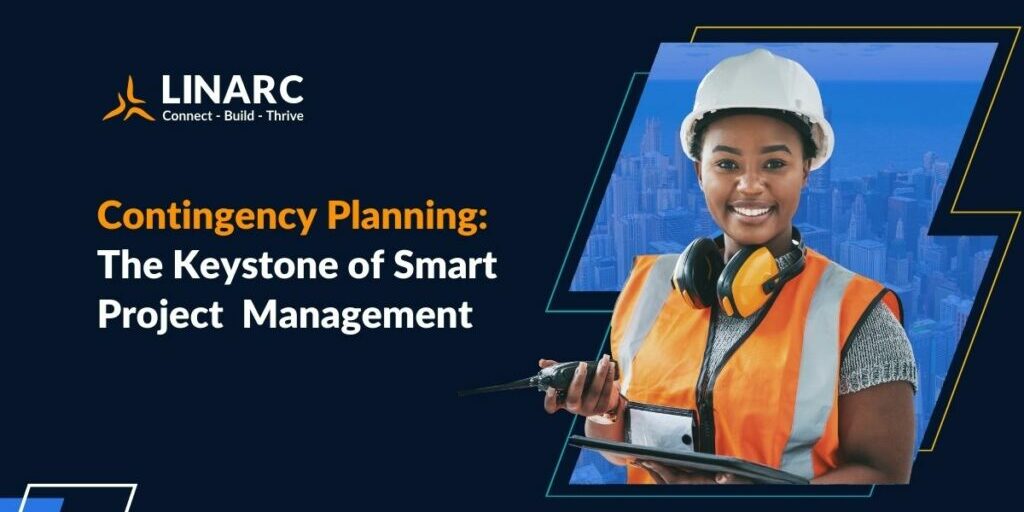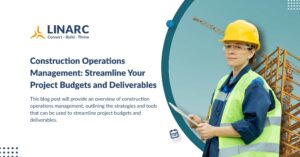Contingency Planning: The Keystone of Smart Project Management

Construction projects are inherently complex and face many unforeseen challenges. A crucial part of managing these challenges is contingency planning. It’s not just about setting aside resources in the budget for unexpected events—it’s a strategic move that bolsters the project’s resilience and flexibility and shifts budget management from reactive to proactive. Recognizing potential risks early, crafting strategies to mitigate them, and preparing a comprehensive plan can provide a false sense of security. This approach often devolves into micromanagement, which can be counterproductive. Truly effective project management goes beyond mere preparation; it is fundamentally about adaptability. It demands thoughtful contingency planning in budgeting, scheduling, and scope management to navigate the unpredictable landscape of construction projects successfully.
Here’s what we cover:
Biggest threats to fixed budget in construction
Fixed-budget in construction projects are susceptible to various risks that can lead to cost overruns. Managing a construction project within a predetermined budget requires careful planning, monitoring, and controlling known and unforeseen factors. Here are some of the biggest threats to maintaining a fixed budget in construction:
- Scope Creep
Scope creep happens when the project scope expands beyond the original plans without adjustments in budget or timeline. Changes or additions to the project requirements significantly increase costs. - Material Price Fluctuations
The cost of construction materials can vary widely due to market demand, supply chain issues, or geopolitical events. Increases in material prices can strain a fixed budget. - Labor Costs Overruns
Labor costs can escalate due to overtime, staffing shortages, or the need for specialized skills not accounted for in the initial budget. - Project Delays
Delays can result from a variety of causes, including bad weather, permitting issues, or delays in material delivery. Each day the delay persists can add to the overall cost. - Design Changes
Modifications to the design during construction can lead to increased costs. Changes may arise from unforeseen technical requirements, client requests, or regulatory compliance issues. - Poorly Defined Project Scope
A project that starts with ambiguous or incomplete specifications is more likely to encounter issues that can lead to additional costs. Clear, detailed project plans and specifications are essential to managing costs. - Subcontractor and Supplier Issues
Problems with subcontractors or suppliers, such as bankruptcy, non-performance, or quality issues, can lead to unexpected costs for rework or finding replacements. - Site Conditions
Unforeseen site conditions, such as contaminated soil, archaeological finds, or unexpected underground utilities, can result in additional work and costs. - Regulatory and Permitting Issues
Delays or changes required to comply with regulations, codes, or permitting requirements can lead to cost overruns. - Inflation
General inflation can affect the overall costs of goods and services related to the project, impacting the fixed budget. - Poor Risk Management
Failure to identify, assess, and mitigate risks at the outset of a project can lead to surprises and associated costs that are not accounted in the budget. - Communication Failures
Miscommunication among stakeholders, including contractors, clients, and designers, can lead to errors, rework, and increased costs.
In a budget-controlled project, the strategic allocation of funds within the construction project budget and contingency planning exemplifies prudent management. Let’s delve deeper into why this approach is not just cautious but intelligent planning.
Risk Management
At its core, contingency planning in project management is about preparing for potential risks and uncertainties that could adversely affect the project. By proactively identifying possible risks early, project managers can develop strategies to mitigate these risks or respond effectively should they arise. This forward-thinking approach to risk management is key to minimizing disruptions and safeguarding project success. However, more than simply enumerating known risks at the beginning of the planning process is required to ensure resilience; it merely equips the project manager to anticipate and plan for these identified risks.
Financial Preparedness
Designating a specific portion of the budget for contingency purposes is akin to creating a financial safety net for unexpected expenses. This strategic reserve acts as a critical buffer, potentially distinguishing between a project that maintains its course and one that veers off track due to unforeseen costs. Such preparedness ensures that the project can proceed without the delays and financial burdens associated with emergency fund acquisition in the face of unexpected issues. A cornerstone of effective budget management involves setting aside funds for anticipated risks and preparing for the unknown. Allocating contingency funds thoughtfully, enhances project resilience and ensures smooth progress despite unforeseen challenges.
Enhancing Stakeholder Confidence
Financial institutions, clients, and contractors develop greater confidence in a project when comprehensive contingency plans are in place. This readiness indicates a high degree of foresight and responsibility within the project management team, showcasing their preparation for various scenarios. Beyond merely having plans, transparently communicating these strategies and their implementation processes further solidifies stakeholder trust. The team’s demonstrated ability to adapt to unforeseen changes without losing sight of the project’s objectives reassures stakeholders of the project’s resilience. Furthermore, contingency planning underscores the project’s financial stability, ensuring diligent management of project resources to accommodate unexpected expenses. This strategic approach not only maintains stakeholder support throughout the project’s lifecycle but also protects the project’s value, ensuring that it meets its goals and delivers on its promises.
Improving Project Flexibility
Including a detailed contingency plan and a dedicated budget segment significantly enhances a project’s adaptability to change. Pre-allocating resources for unforeseen circumstances ensures the project can smoothly pivot or adjust when unexpected changes arise. This level of flexibility is especially vital in dynamic project environments where conditions, requirements, and stakeholder expectations can shift rapidly. Moreover, it allows the project team to explore innovative solutions and make strategic decisions without financial or operational rigidity constraints. By fostering an adaptable project framework, contingency planning prepares the team for challenges and opens up opportunities for efficiency improvements and value creation. This adaptability mitigates risks and positions the project for success in an ever-evolving landscape, ensuring that it remains viable, competitive, and aligned with its objectives regardless of external pressures.
Cost Control
Interestingly, contingency planning is pivotal in enhancing project cost control. By proactively anticipating potential budget overruns and allocating funds accordingly, project managers circumvent the disruptive need to divert resources from other crucial project areas. This foresight in budget management preserves the project’s overall financial integrity. Distinguishing between proactive budgeting and reactive financial adjustments leads to more efficient expenditure, preventing wasteful spending and utilizing funds judiciously. Furthermore, a strategic contingency fund helps mitigate scope creep, allowing the project to accommodate unexpected changes without extending the budget or diluting focus from core objectives. Budget contingency results in better resource allocation and builds stakeholder confidence by showcasing a commitment to fiscal prudence and the adept navigation of project uncertainties.
Paving the Path to Comprehensive Contingency Planning
As we delve deeper into the essence of contingency planning, it becomes evident that a multifaceted approach is paramount. Beyond identifying potential risks and allocating funds, the journey toward developing a foolproof contingency plan requires embracing a spectrum of strategies. From the innovative application of technology to the vital involvement of stakeholders and the necessity of continuous review, each element plays a crucial role in fortifying our projects against the unforeseen. Let us navigate these critical components, uncovering how they collectively contribute to a resilient and dynamic contingency planning process.
Embracing Technology in Contingency Planning
Modern project management software provides unparalleled support in risk management and contingency planning. These tools offer real-time risk assessment, budget tracking, and scenario planning, allowing project managers to make swift, informed decisions. By leveraging technology for enhanced data analytics and communication, contingency plans are grounded in accurate, up-to-date information, increasing the project’s adaptability and resilience. When selecting project budget & control software, consider features that facilitate comprehensive integration with other tools, financial scenario modeling, and AI-supported budget planning. Additionally, prioritize software with user-friendly interfaces, robust security measures, customizable options for scalability, and strong training and support services. Features to look for include:
- Integration with estimation & bidding software
- Financial scenario modeling and risk mitigation
- Scenario development for different contingency levels
- AI support for budget planning and inflationary trend analysis
- Detailed contingency breakdowns and phase-specific adjustments
- Budget and progress tracking with subcontractor fund management
- Cash flow analysis with overutilization alerts
- Advanced reporting & analytics for better decision-making
These functionalities streamline project management tasks and ensure that every aspect of the project’s budget and risks are managed, enhancing overall project success.
Involving Stakeholders in Contingency Planning
Effective contingency planning in construction projects necessitates active engagement with all stakeholders, including clients, contractors, financial institutions, and community representatives. Their involvement is crucial for identifying a broader range of potential risks and collaboratively developing robust mitigation strategies. This engagement fosters a shared sense of responsibility, enhances transparency, and builds trust, strengthening the project’s resilience against uncertainties. Stakeholders’ insights and feedback are invaluable for continuously refining contingency plans, ensuring they remain adaptable and relevant throughout the project lifecycle. Moreover, involving stakeholders in the contingency planning empowers them to make informed decisions, contributing to a more agile and responsive project management approach. Engaging stakeholders in this way mitigates risks more effectively and secures a foundation of support and collaboration, which is essential for navigating the complexities of construction projects.
The Importance of Continuous Review
Contingency planning is not a one-time task but an ongoing process that requires regular review and adjustment. New risks may emerge as projects progress, and existing plans may need revision. Continuous monitoring and reassessment of the project’s status against its contingency plans ensure that responses remain relevant and practical, preventing minor issues from escalating into major problems.
Addressing Common Pitfalls
While contingency planning is critical, it’s important to be aware of common pitfalls such as over-reliance on contingency funds at the expense of proactive problem-solving or failure to communicate and update all stakeholders on contingency strategies. Effective contingency planning involves more than just setting aside funds; it requires a holistic approach that includes stakeholder engagement, transparent communication, and a willingness to adapt strategies as necessary.
Conclusion
Incorporating contingency planning into project management is about ensuring resilience, financial stability, and success. It embodies the principle of “plan for the best, prepare for the worst,” enabling projects to navigate challenges easily and confidently. By embracing technology, committing to continuous review and adjustment, and avoiding common pitfalls, construction projects can achieve both preparedness and true adaptability and efficiency, paving the way for successful project completion.




